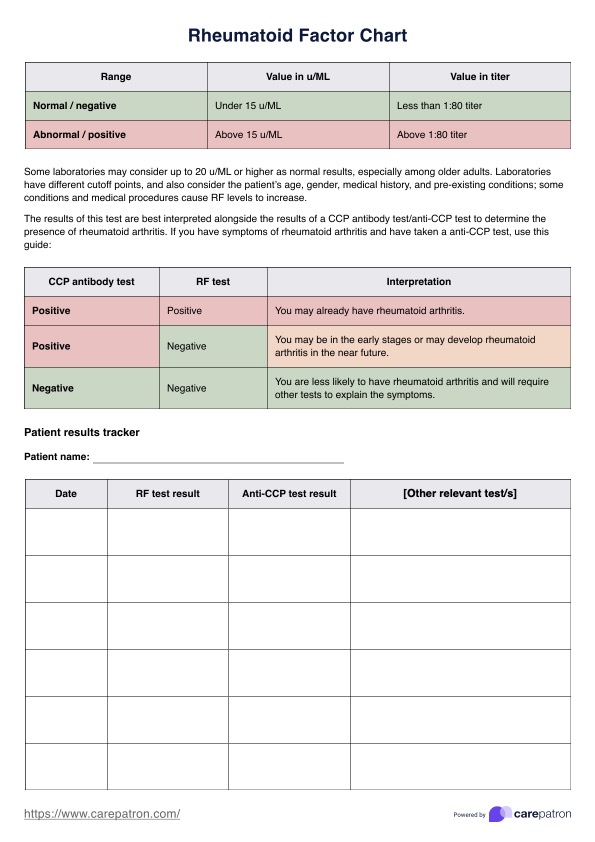A normal or negative rheumatoid factor (RF) result is typically under 15 u/mL or less than a 1:80 titer, although some laboratories may consider up to 20 u/mL normal, especially for older adults.

Rheumatoid Factor Chart
Use our Rheumatoid Factor Chart for teaching patients to easily understand RF blood test results and documenting RF levels over time.
Rheumatoid Factor Chart Template
Commonly asked questions
RF results above the normal range may suggest rheumatoid arthritis or another autoimmune disease, especially if paired with a positive anti-CCP antibody test. A positive RF alone, however, does not confirm a diagnosis and is best interpreted alongside other lab tests and patient symptoms.
Reducing RF levels may involve managing underlying conditions such as rheumatoid arthritis with anti-inflammatory medications, lifestyle changes like regular exercise, and, in some cases, disease-modifying drugs. Consult a healthcare provider for personalized recommendations.
EHR and practice management software
Get started for free
*No credit card required
Free
$0/usd
Unlimited clients
Telehealth
1GB of storage
Client portal text
Automated billing and online payments











